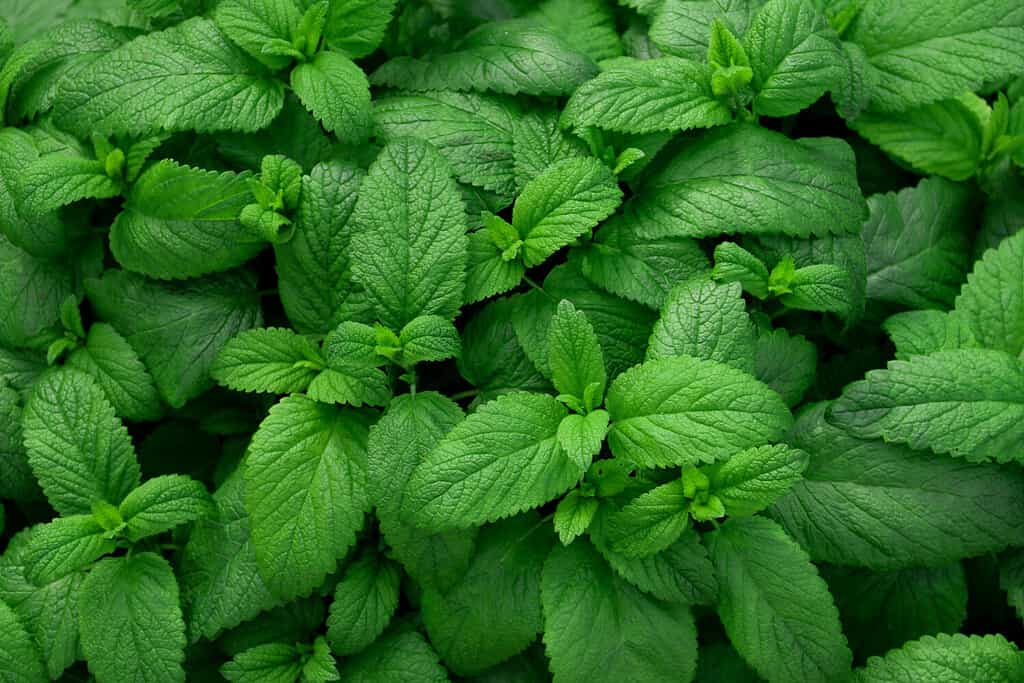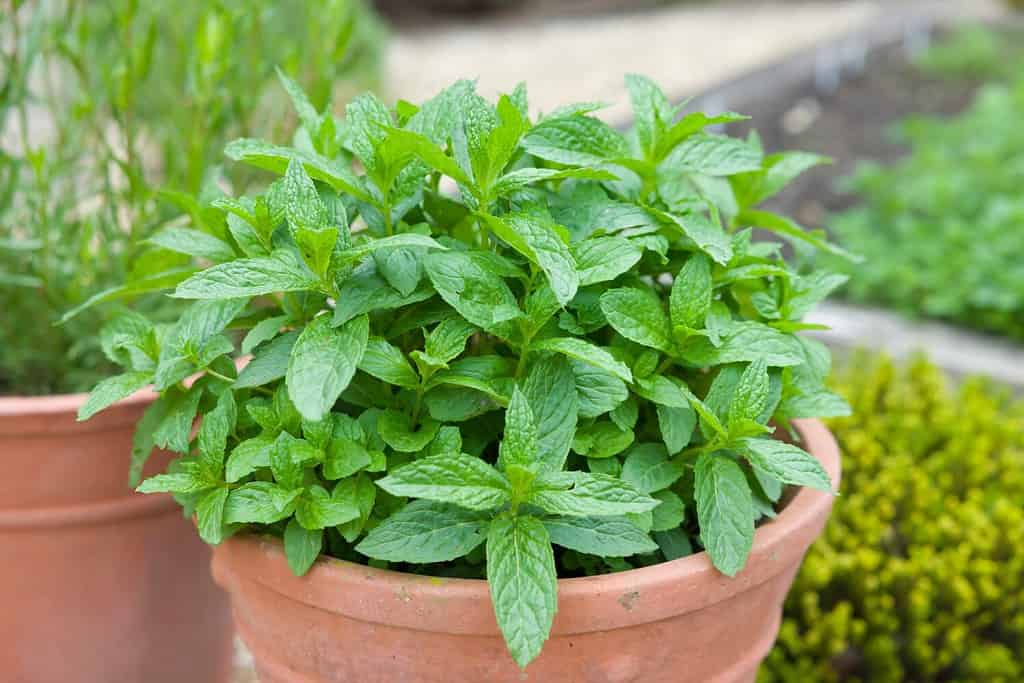After you’ve spent an all-too-short summer caring for your favorite herbs, you may wonder if you have to start all over the following season. With some annual herbs, that is necessary. However, mint is a perennial. So keeping it alive throughout winter is relatively easy, as long as you follow a few key steps. Here, we’ll cover 6 tips to keep mint alive in the winter.
What is Mint?

Mint is a broad term typically used to refer to several different species in the Mentha genus.
©Olesya Myzzz/Shutterstock.com
Mint is a common and all-encompassing term referring to the different species in the Mentha genus, which belongs to the Lamiaceae (mint) family. Most people are familiar with peppermint and spearmint. However, there are approximately 30 species in the Mentha genus. Most are native to the subtropic, tropic, and temperate regions.
Mints are well-known as medicinal plants with highly aromatic leaves. They are highly regarded, well-researched, and a prize plant in much of the world. Most species are perennial, and they all will happily crossbreed with each other when planted in close proximity.
The history of mint is hard to pin down. However, we know that early references exist in Greece and Rome. The Romans brought this aromatic herb to Europe, along with some preparations featuring mint. It rapidly became a favorite for both culinary and medicinal applications.
These days, it is also a common (and easy) addition to any herb garden. Most people can readily grow any mint variety since they thrive in USDA Hardiness Zones 3-8. Mints can survive in warmer climates, though they need some extra care. But what do you do to keep mint alive during winter in colder climates?
6 Tips for Keeping Mint Alive in the Winter
Caring for your mint plant in the winter is easier than you may think. Follow these easy tips to keep your plant alive.
#1 – Bring Containers Inside

Bringing your potted mint inside during the winter will protect it against the harshest weather.
©Paul Maguire/Shutterstock.com
Not everyone plants their mint directly in the garden bed. Mint is known to take over as much space as it possibly can. So some gardeners plant their mint in containers to try and reduce the dramatic spread. If that’s you, and you live in a colder climate, bring your mint plant inside before the freezes start. You can keep it nice and cozy inside before hardening it off again in the spring.
#2 – Protect From Frost
If you bring your mint inside over the winter, you may still need to protect it from frost. You will most likely keep the container near a window to take advantage of the sun, where it is potentially susceptible to cold drafts. Consider covering the mint plant with newspaper or a lightweight frost cloth on the coldest days.
#3 – Prune the Mint Back
This step is most important for any container plants and isn’t as necessary for those in garden beds. However, you may want to consider doing this step for in-ground mint as well. It will help reduce the amount of tasks you have to complete the following spring.
For container plants, pruning them back is a vital part of helping the mint survive winter. Use clean kitchen shears or scissors to only a few inches above the soil.
#4 – Mulch
This step is helpful, regardless of where your mint is planted. Adding a few inches of mulch to the soil around your mint plant will help insulate the roots. You can use wood chips, straw, or even leaves. Even a thin layer will help protect against freezing, which is critical for those living in colder growing regions.
#5 – Water Properly

Avoid giving your mint too much water through the winter.
©iStock.com/Tgordievskaya
Perennial herbs don’t die over the winter. Those planted in the ground go into dormancy, and those in containers may slow their growth but will continue living. So, ensuring they have adequate water is vital. Mint in your garden bed typically only needs the moisture that arrives with winter storms. However, container plants will need occasional watering. Check your mint at least weekly and water when the soil becomes dry.
#6 – Cut Back Damaged Stems
You can do this step in the fall after the first frost or in the spring before the new growth starts. There isn’t necessarily a right time to cut back any damaged stems. The key is to remove them before your mint wants to develop new spring shoots. Doing so will encourage your mint plant to grow (not that mint typically needs encouragement).
The photo featured at the top of this post is © Edita Medeina/Shutterstock.com
Thank you for reading! Have some feedback for us? Contact the AZ Animals editorial team.







